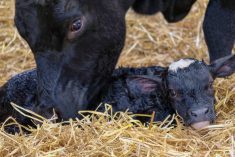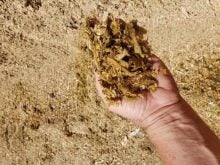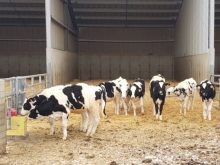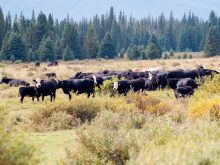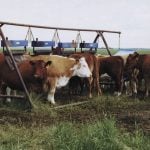It’s widely accepted that excessive potassium (K) fed to a pre-fresh dairy cow may lead to a high incidence of milk fever at calving. However, many don’t realize that once they calve, high-milk-producing cows require lots of dietary potassium. Plenty of research since the 1960s has proven that high dietary levels of potassium promote good dry matter intake and rumen digestibility, which together lead to better milk production. That is why well-balanced dairy diets should be reviewed for potassium content. If there isn’t enough, potassium supplementation is easily justified and implemented.
Potassium is classified as a vital macro-mineral for dairy cows. It’s similar to calcium and phosphorus, required in grams per cow per day, as compared to essential trace minerals such as copper and zinc which are required in milligrams per head (mg = 1/1000 gram). According to NRC (2001), a typical dairy cow needs about 1.0 per cent potassium of her daily diet (dm basis) to perform vital functions, namely osmotic balance at the cellular level, nerve transmission and of course, good milk and milkfat production.
The funny thing is that a good body of research suggests that 1.0 per cent potassium is too low in the lactation diet. This K deficit can cause high-producing dairy cows to become marginally deficient, especially during their first 10 weeks of lactation.
Read Also

Harvest wraps up and fall work begins
At the Eppich famly ranch in western Saskatchewan, the fall harvest was successful with few breakdowns, cows and calves have been sorted and a new tractor has arrived
These scientific papers point out that dairy cows naturally lose a significant amount of potassium every day through milk production alone. That’s because milk contains about 0.15 per cent potassium (compared to 0.10 per cent calcium and 0.08 per cent phosphorus), which secretes 25-40 per cent of daily potassium intake, depending on feed intake and milk yield. Since there is little storage capacity in the cow’s body (such as bones for calcium and phosphorus), a significant amount of potassium must be consumed in the lactation diet every day to meet body maintenance and production requirements.
Correcting a K deficiency
As a dairy nutritionist, I read many of these research papers which recommend that all potassium requirements of lactating dairy cows can be met with at least 1.3-1.8 per cent potassium formulated in early-lactation diets (dm basis). For example, I have seen first-hand a case of a possible K-deficiency in a 120-milking cow operation that took this advice, with positive results.
Last year, this producer told me he was having milk production issues with his early-lactation cows from 50 to 90 days in milk. Upon review of his lactation diet, adequate amounts of energy (44 Mcal/head), protein (17 per cent) and enough calcium (200 grams)/phosphorus (110 grams) were being fed. Upon review of the dietary potassium level, it seemed low (0.90 per cent). So I felt we should increase it to 1.4 per cent.
I did this by increasing the potassium-enriched alfalfa hay portion of the diet (2.88 per cent K) by two kilos, while substituting out an equivalent amount of corn silage (1.1 per cent K). Plus, I added 40 grams/head of potassium chloride to their grain mix, which was added after the forage in their TMR. No other dietary changes were made and within about two weeks of introduction, average dry matter intake of the cow herd increased from 25.7 to about 26.2 kg per head daily. A milk production increase followed from 33.8 kg to about 34.7 kg per cow per day. Milkfat remained unchanged at 4.2 per cent.
At first I was hesitant to increase the potassium in this diet by 40 per cent, since high levels are known to interfere with magnesium, another macro-mineral. Researchers at Ohio State University showed that for every one per cent unit increase in dietary K above the 1.0 per cent NRC recommendation in the lactating diet, 20-30 per cent more magnesium is needed to meet the cow’s respective requirements. That’s because high levels of dietary potassium inhibit magnesium absorption in the cow’s gut. Therefore I made sure that this new lactation diet met a critical ratio of 4:1 (K to Mg) to avoid antagonistic problems.
I am not sure why we focused solely upon the potassium levels of this lactation diet in the first place. It might have been that for some time, I’ve implemented a 1.4 per cent potassium level in most of my dairy feeding programs. I also think that I am balancing more dairy TMRs containing corn silage, which in itself contains relatively low potassium and often needs K supplementation. In either case, it’s a good lesson to me — review every lactation dairy diet that I come across and make sure that enough potassium is being fed.




